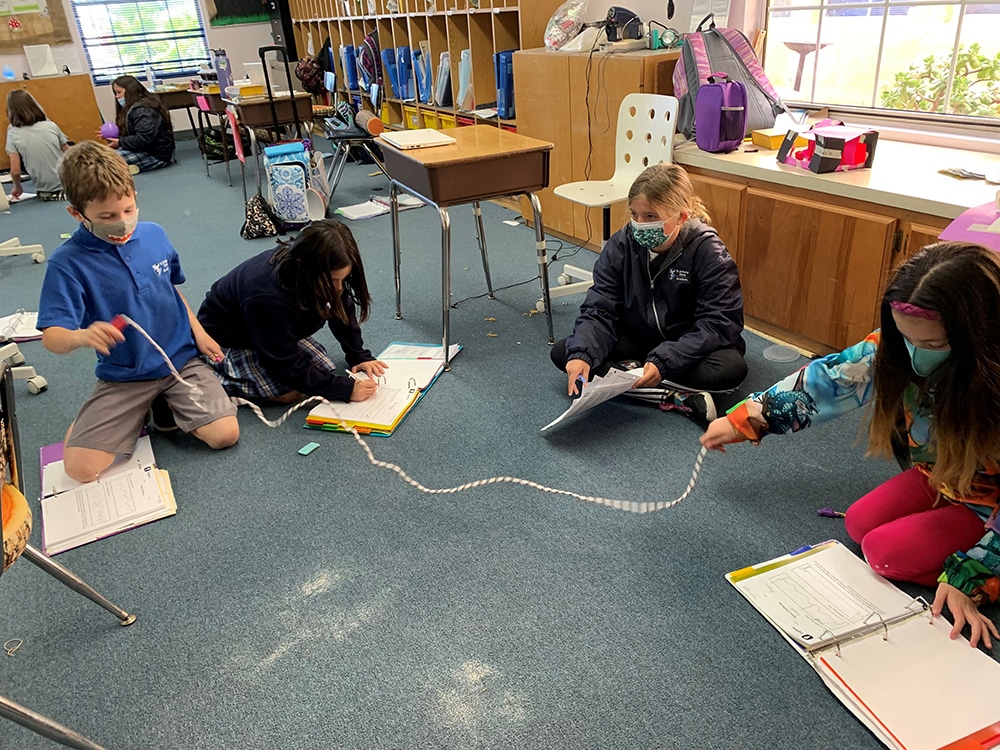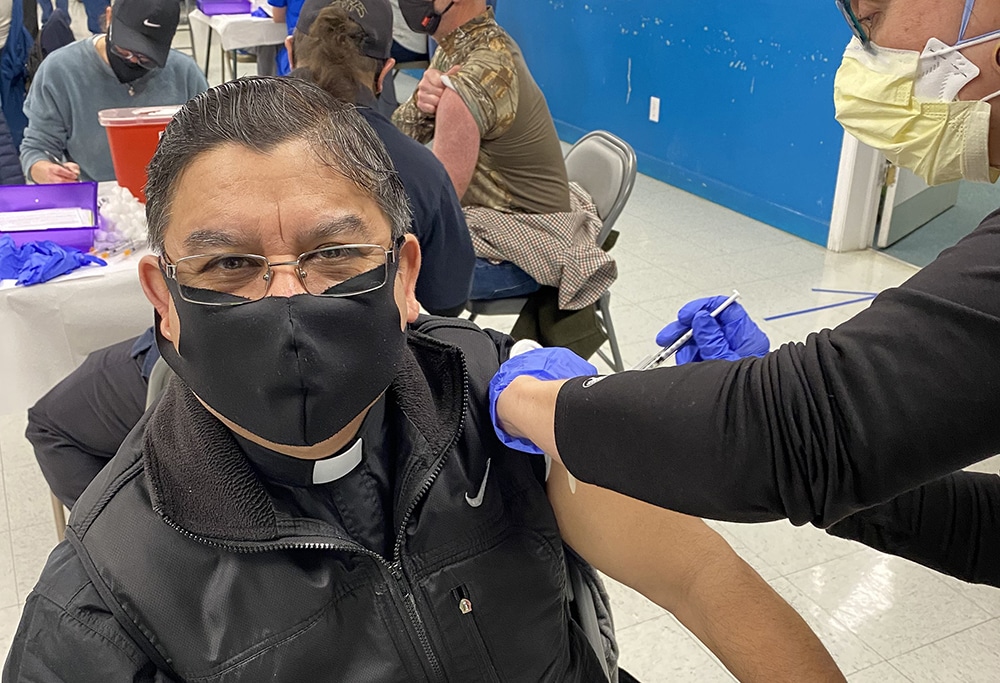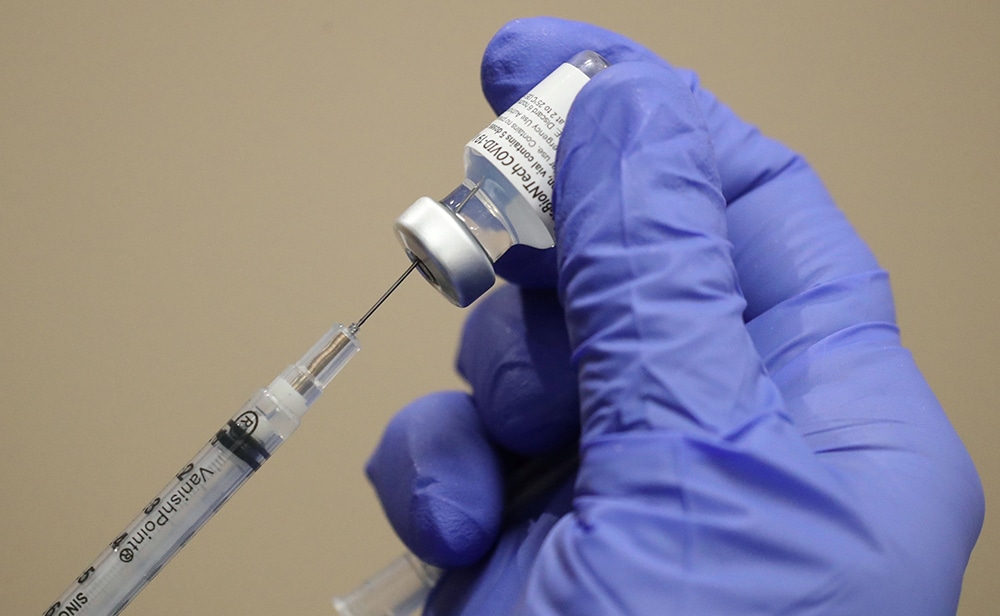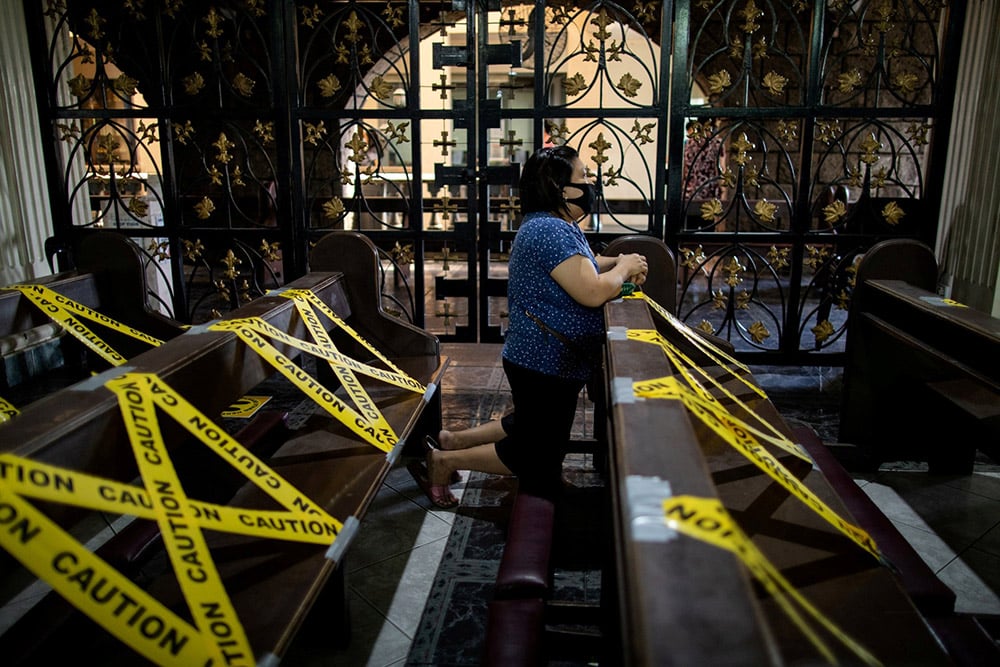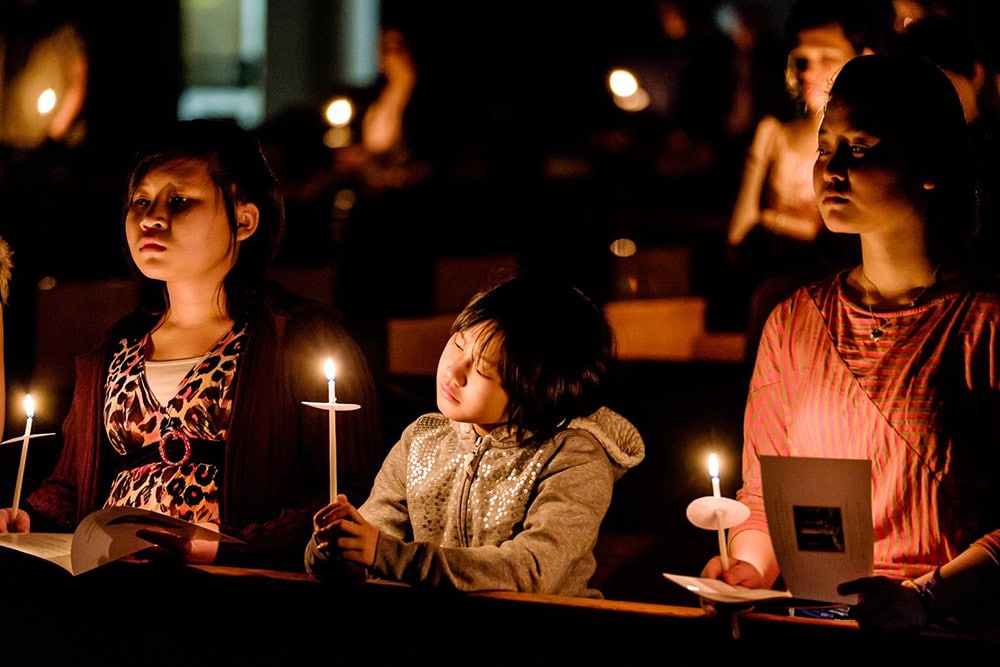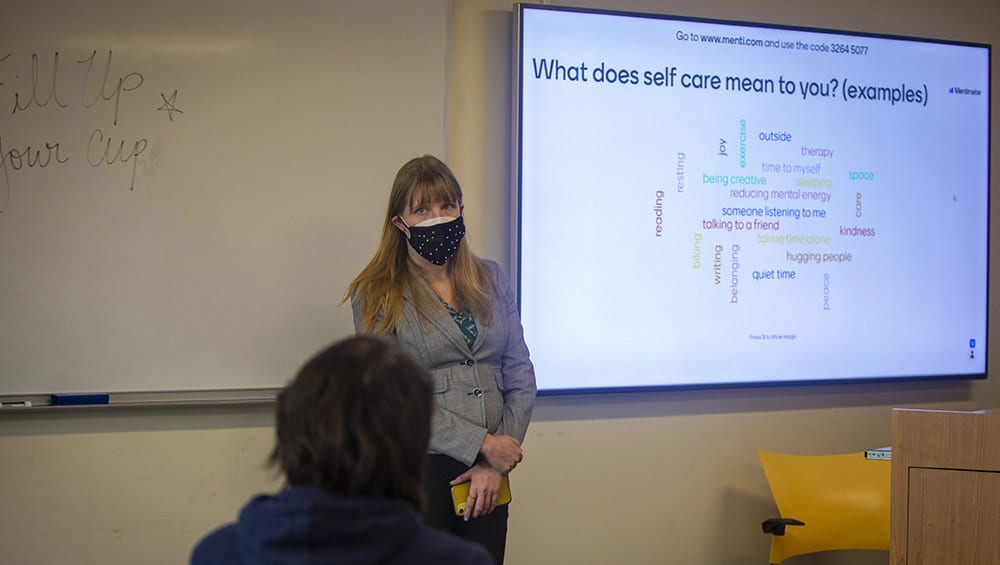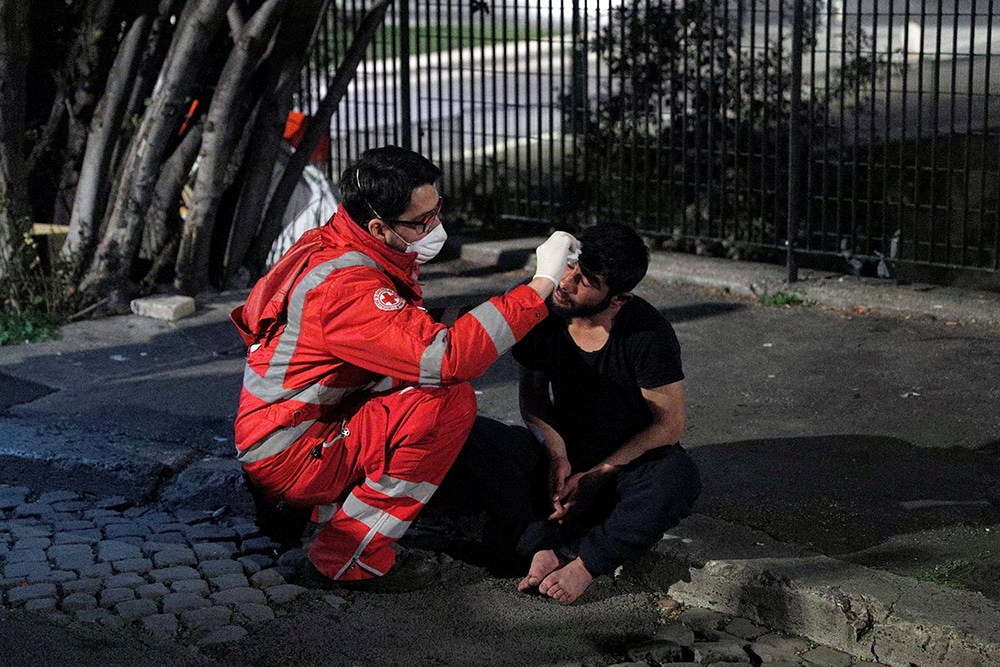WASHINGTON (CNS) — When the World Health Organization declared a global COVID-19 pandemic March 11, 2020, the world shuddered, then shuttered.
“Pivot” became the word of the hour as much of everyday life had to adjust to a different way of doing things. Education was just one facet that had to do a quick about-face from in-person to online teaching and learning.
The same is true with special education, which posed its own challenges.
Jill Reffett decided this year to home-school her two daughters, ages 12 and 10, who have Down syndrome — even though her husband is principal of the girls’ Catholic school in Lawrence, Kansas.
“Individuals with Down syndrome are 10 times more likely to succumb to COVID than the average population,” Reffett told Catholic News Service in a March 9 phone interview. They tried online learning, she added, but “it was just too much.”
Reffett said it’s her first time home-schooling. “I’m terrible at it,” she laughed.
“We’ve done the best we can in a bad situation,” Reffett added. “I’m a full-time working mother who’s also trying to keep my girls moving forward with our goals this year. I knew we weren’t going to tear it up.” Still, she said, “a couple of teachers at the school, even though the girls aren’t going there, (were) a huge help.”
Reffett said, “In some ways, it’s been a year to remind us what’s important.” Asked to define “important,” she replied, “Time. We have always said we wouldn’t be those people who got caught up with keeping up with so many activities we didn’t want to be overbooked. As soon as we knew it, our girls were signed up for a million activities.”
Now, though, there are “family nights playing game, family nights reading. Amounts of time in the fire pit. Simple little things we had let slip past us, it kind of forced us to be creative. You have to find creative ways to do this at home,” Reffett said. “We’re very blessed to have had that opportunity to be safe in the situation that we’re in and be financially OK.”
“There was a whole new layer of challenges,” said Lynn Hire, executive director of the FIRE Foundation in Kansas City, Missouri, which gives grants to Catholic schools to help mainstream special-needs students.
“Our kids were suddenly learning in an entirely different way in an entirely different environment. Distance learning worked for some kids pretty well, for some kids it was a real challenge. When you factor in a number of diagnoses, it can become really difficult,” Hire said. “We had parents, of course, working in tandem with special educators, educators working one-on-one with kids.”
The prevailing attitude was “the show must go on. We have to make sure that learning continues for kids,” she added. “Because of the system and the supports we had in place, we were able to keep things going for kids. Things did not stop. I don’t think the story of special education is that much different from typical learners in classrooms.”
Then Hire asked, “For whom has it not been a challenge?”
One downside for special-education students is “further isolation. That we know. They were already isolated. This is further isolation,” said Charleen Katra, executive director of the National Catholic Partnership on Disability.
“The other big negative for our community,” Katra added, is “they’re not getting the education they need in the church — they’re not getting the social interaction either.”
But as big as all that may seem, she said, “the bigger challenge is getting them back in” once the pandemic is over.
“The lack of communal life in particular is tied directly to the spiritual side of your life in that you’re not connected to your church family,” Katra noted.
On the good side of things, “virtual (learning) has almost been a better route for some of our kids. It cuts down on the bullying,” she said, adding, “There are pros and cons to every situation.”
Sister Kathleen Schipani, of the Sisters of the Immaculate Heart of Mary, is director of the Office for Persons with Disabilities in the Archdiocese of Philadelphia and also runs the archdiocesan deaf apostolate, which has presented its own set of challenges over the past year.
Children, she said, “so much cherish being able to get together with their friends because sign language is very visual, and presence means a lot to children who are deaf. However, thank goodness for technology. Deaf children, deaf adults, they benefit from FaceTime as well as video phones. That’s been a big help — a blessing, really — but it’s not the same as in-person engagement.”
Pastoral workers, according to Sister Schipani, have been “incredibly creative and generous in using new technologies in ways that enable people to deepen their faith and feel those connections with the deaf community.”
For her own part, “I can’t wait to be able to be back without fear of the virus. We have learned ways to connect and also connect broadly, kind of sharing resources broadly throughout the United States. I think that will have some positive impact moving forward after the pandemic.”
One example: “Pre-pandemic there was just one livestreamed Mass available to the public,” Sister Schipani told CNS. “Now there are many from different dioceses — in American Sign Language with a priest who is signing, not interpreted.”
In the Diocese of San Diego, Catholic schools had committed, pre-pandemic, to use a new teaching model called Universal Design for Living, or UDL, for the next five years, said Julie Cantillion, associate director of the diocesan school office. Since the COVID-19 outbreak, “it’s accelerated the desire and accelerated the urgency,” Cantillion said.
“We’re assuming that all students come to us with different needs and different learning styles,” she added. “With UDL, you design your whole approach assuming that every learner is different.”
UDL isn’t something new added to the curriculum, Cantillion explained, but a new approach to lesson planning that can better accommodate the needs of students with special needs, which she put at about 8% of the overall student body in the diocese’s Catholic schools.
“We don’t do it because we need more enrollment,” she said. “We do it because they’re entitled to the same education.”
The Catholic Coalition for Special Education, which serves the archdioceses of Washington and Baltimore, has much the same mission as the FIRE Foundation.
After the initial shock of wondering how the organization could fulfill its mission if its biggest fundraiser of the year could not be held, its founder and executive director, Francesca Pellegrino, said her thoughts turned to “how is this going to impact students and people with disabilities?”
Pellegrino said her initial reaction was, “Oh, it’ll be a few weeks or a month or a couple of months. We didn’t realize it was going to be a year or more.” But with all that time having passed, she added, “we’ve all settled into a new reality.”
She elaborated in a March 10 interview with CNS. “The isolation of the pandemic is just really tough, because they need the stimulation and the social outlet that comes from being with other people. They need that more than the your typical child also, in terms of learning, remote learning is difficult.
“Children with difficulties sometimes have difficulty paying attention and they really need the in-person, hands-on sort of prompting that comes within-person teaching that you just can’t do over a computer.”
If there are benefits to a hastily imposed new model of learning, Pellegrino hasn’t found them yet.
But “despite all of the suffering, the loss, the toll on family and finances, it’s just inspiring, really, to see all those who have stepped up in so many ways to help the people most in need,” she said. “It’s always wonderful, in the midst of the crisis, to have a reminder of how wonderful people can be, and they care for each other.”
What’s more, “the phones are ringing off the hook” at her office, Pellegrino added, mostly from parents whose special-needs children are enrolled in public schools in one of the two archdioceses, frustrated with how things are going there.
“The Catholic schools are doing a tremendous job with limited resources,” she said. “When children with disabilities are educated, everybody does better.”

